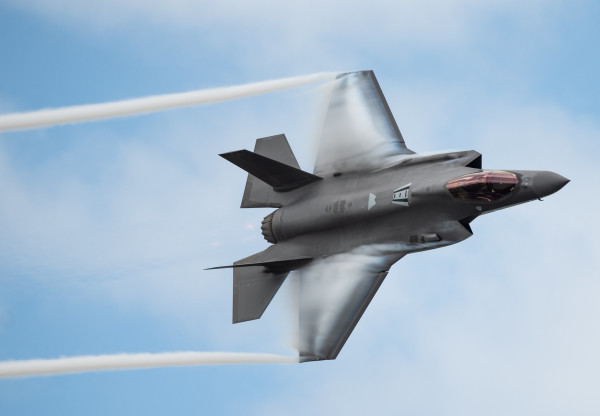

After years of working to reduce the number of major aviation mishaps and associated fatalities among U.S. service members, the Defense Department is now facing a worrying spate of incidents.
The Air Force has had six aviation mishaps across its aircraft since the beginning of May, averaging one mishap each week.
On May 2, an armed F-15C Eagle from Oregon Air National Guard’s 142nd Fighter Wing skidded off the runway during an unplanned landing at Joint Base Andrews, Maryland, Saturday afternoon after declaring an in-flight emergency.
On May 15, an F-22 Raptor assigned to the Air Force’s 43rd Fighter Squadron crashed near Eglin Air Force Base in Florida after the aircraft’s pilot safely ejected.
Related: US military deaths from aviation mishaps plummeted to a five-year low in 2019
On May 19, an F-35A Lightning II assigned to the Air Force’s 58th Fighter Squadron crashed upon landing at Eglin AFB in the base’s second fighter jet crash in less than a week. The pilot ejected safely.
The back-to-back mishaps at Eglin triggered a brief suspension of flight operations at the base as part of a precautionary “safety pause,” Military.com reported.
On June 8, the landing gear of an F-35A Lightning II assigned to the Air Force’s 388th Fighter Wing collapsed during landing at Hill Air Force Base in Utah. The pilot egressed safely from the aircraft.
That same day, an Air Force C-130 overshot the runway at Camp Taji Airbase in Iraq, crashed into a wall, and a burst into flames, injuring four U.S. service members.
On June 15, an F-15C Eagle assigned to the Air Force’s 493rd Fighter Squadron at RAF Lakenheath in the United Kingdom, crashed in the North Sea on Monday, killing pilot 1st Lt. Kenneth Allen.
“All six of these mishaps are currently under on-going and independent Safety Investigation Boards,” Air Force Safety Center spokesman Keith Wright told Task & Purpose.

The series of mishaps comes on the heels of a relative decline in both Class A mishaps — defined as an incident involving a loss of life or at least $2 million in damage to an aircraft — and related fatalities across the U.S. armed forces in recent years.
In January, a Task & Purpose analysis showed that the U.S. military saw 43 Class A mishaps and just 13 related fatalities in fiscal year 2019 across the Army, Navy, Marine Corps, and Air Force, well below the U.S. military’s six-year high of 52 incidents and 39 deaths in fiscal year 2018.
According to mishap data, the Air Force and Navy saw a significant decline in both Class A mishaps and mishap-related fatalities from 2018 to 2019 while the Army and Marine Corps saw slight upticks in serious mishaps year over year.
In particular, Air Force mishaps fell from 23 to 15 in a single year, a decline that service officials attributed to a force-wide operational safety review initiated in mid-2018.
That safety review came on the heels of a Military Times investigation that showed mishaps involving aircraft across the armed forces had ballooned by nearly 40 percent between 2013 and 2017.
“The Air Force remains focused on investigating each mishap individually to identify specific cause as well as recommendations in addition to looking for potential trends and commonality amongst these mishaps in effort to safeguard Airmen, protect resources and preserve combat capability,” Wright told Task & Purpose.
The Air Force isn’t the only service who has struggled with aviation mishaps since May: on Thursday, two naval aviators assigned to Carrier Air Wing 11 aboard the USS Theodore Roosevelt ejected from their F/A-18 Super Hornet over the Philippine Sea before they were safely recovered by helicopter.
According to Naval Safety Center data, the loss of the Super Hornet was the Navy’s sixth Class A aviation mishap so far this year.
Related: Watch the Air Force Thunderbirds quickly recover from a high-speed hiccup over Los Angeles
